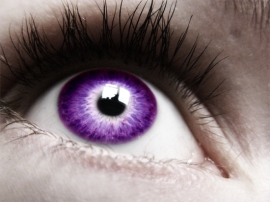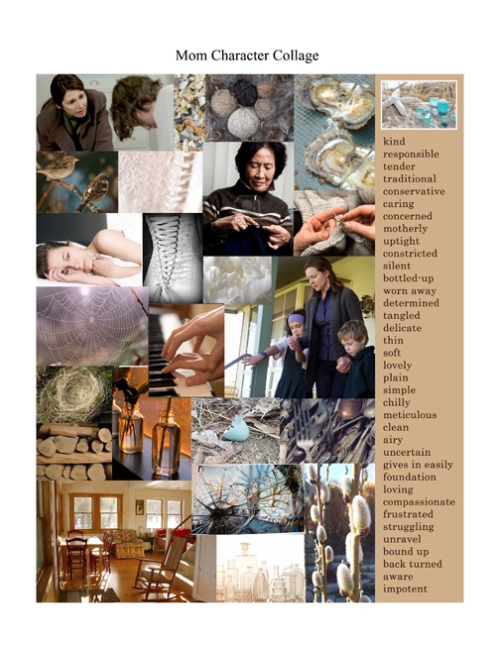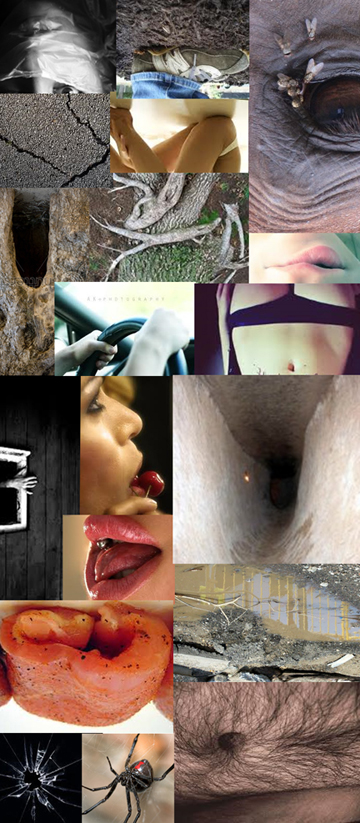 I’m a graphic designer in my day job, and I have a background in art and illustration. It’s natural for me to think visually. In fact, I think visually before I think in words. This might seem odd for a writer, but in many ways it’s an asset.
I’m a graphic designer in my day job, and I have a background in art and illustration. It’s natural for me to think visually. In fact, I think visually before I think in words. This might seem odd for a writer, but in many ways it’s an asset.
One of the great things about writing is that you are painting with words. You are doing your best to build images in your readers minds. As readers we build character and world with an author. Before the movies ever came out, we co-created our own visions of what Middle Earth looked like, or Hogwarts. This interchange is an intimate and beautiful experience, and one of the great joys of reading.
So how do we paint those images for our readers?
Of course this has to do with language. Words. Which ones do we pick and how do we use them. But I want to talk about the step before we use language. The part where we visualize, dream, imagine.
What’s interesting about dreaming, however, is that it’s often vague. When we write, we want to be specific. We want rust-flecked candelabras, and fraying coat tails, and honey as thick and dark as blood. Details make a world real to the reader. So how do we dream up something concrete within the unlimited space of our mind?
I like to make collages.
I make dozens of collages to help me better understand and develop a character. I use collages to track down an emotion in a scene, or visualize a setting. The cliche says that a picture is worth a thousand words…so if you create a collage of pictures, you might find yourself with an abundance of words and details to weave into your language.
Let me show you a few of these…
The following collages come from three entirely different projects and each was created to help me access a different aspect of my novel.
1. Setting Collages

I’m doing a significant amount of world building with my current WIP, and I’m trying to decide how the world looks by collecting images that have a texture, color, or feeling that resonates with the one I’m trying to design. None of these images are actual locations in the book, instead I’m inspired by the details – abandoned shelves of books, the quality of light as greenery overtakes a cathedral, or the possibility of a round Rosetta window staring down from above. Much of this will never end up in the book, but it does help me to create an aesthetic for the world.
2. Character Collages

I created this collage as a character development exercise to better understand how my protagonist sees her own mother. I began to notice that the character has a color palette and even textures that relate to her: wool, tan colored wood, morning light on hard-wood floors, delicate threads, soft feminine curves, etc. To the right, is a word list, which is the second part of this exercise. Here I’ve explored words that reflect how my protagonist views her mother. But often, I will also create a word/imagery list based on what I see in the photos (i.e. splinter, fuzz, shell, rust, golden light) which all become words I might use when describing the character on the page.
3. Emotion Collages

I was having trouble accessing the emotion in one of my scenes. It was a difficult scene (as you can imagine from the collage), and I think I was protecting myself from actually feeling the moment with my character. So I created this collage to help me feel it. I would look at this collage while writing the scene, and I also created a word list from these images to help add intensity to the writing. Things like dirty meat and hairy stomachs already make my skin crawl – so I tried to use similar words/images in the scene (that were appropriate for the scene – metaphors, etc.) in order to get the reader’s skin to crawl too. (This technique relates to my previous post on the unconscious effect of image systems, motifs, and liaisons in writing).
If you find you’re having trouble with a scene, understanding a character, or really want to see the detail in a landscape, think about creating a collage to help you.
Get visual!


 I’m a graphic designer in my day job, and I have a background in art and illustration. It’s natural for me to think visually. In fact, I think visually before I think in words. This might seem odd for a writer, but in many ways it’s an asset.
I’m a graphic designer in my day job, and I have a background in art and illustration. It’s natural for me to think visually. In fact, I think visually before I think in words. This might seem odd for a writer, but in many ways it’s an asset.
One of the great things about writing is that you are painting with words. You are doing your best to build images in your readers minds. As readers we build character and world with an author. Before the movies ever came out, we co-created our own visions of what Middle Earth looked like, or Hogwarts. This interchange is an intimate and beautiful experience, and one of the great joys of reading.
So how do we paint those images for our readers?
Of course this has to do with language. Words. Which ones do we pick and how do we use them. But I want to talk about the step before we use language. The part where we visualize, dream, imagine.
What’s interesting about dreaming, however, is that it’s often vague. When we write, we want to be specific. We want rust-flecked candelabras, and fraying coat tails, and honey as thick and dark as blood. Details make a world real to the reader. So how do we dream up something concrete within the unlimited space of our mind?
I like to make collages.
I make dozens of collages to help me better understand and develop a character. I use collages to track down an emotion in a scene, or visualize a setting. The cliche says that a picture is worth a thousand words…so if you create a collage of pictures, you might find yourself with an abundance of words and details to weave into your language.
Let me show you a few of these…
The following collages come from three entirely different projects and each was created to help me access a different aspect of my novel.
1. Setting Collages

I’m doing a significant amount of world building with my current WIP, and I’m trying to decide how the world looks by collecting images that have a texture, color, or feeling that resonates with the one I’m trying to design. None of these images are actual locations in the book, instead I’m inspired by the details – abandoned shelves of books, the quality of light as greenery overtakes a cathedral, or the possibility of a round Rosetta window staring down from above. Much of this will never end up in the book, but it does help me to create an aesthetic for the world.
2. Character Collages

I created this collage as a character development exercise to better understand how my protagonist sees her own mother. I began to notice that the character has a color palette and even textures that relate to her: wool, tan colored wood, morning light on hard-wood floors, delicate threads, soft feminine curves, etc. To the right, is a word list, which is the second part of this exercise. Here I’ve explored words that reflect how my protagonist views her mother. But often, I will also create a word/imagery list based on what I see in the photos (i.e. splinter, fuzz, shell, rust, golden light) which all become words I might use when describing the character on the page.
3. Emotion Collages

I was having trouble accessing the emotion in one of my scenes. It was a difficult scene (as you can imagine from the collage), and I think I was protecting myself from actually feeling the moment with my character. So I created this collage to help me feel it. I would look at this collage while writing the scene, and I also created a word list from these images to help add intensity to the writing. Things like dirty meat and hairy stomachs already make my skin crawl – so I tried to use similar words/images in the scene (that were appropriate for the scene – metaphors, etc.) in order to get the reader’s skin to crawl too. (This technique relates to my previous post on the unconscious effect of image systems, motifs, and liaisons in writing).
If you find you’re having trouble with a scene, understanding a character, or really want to see the detail in a landscape, think about creating a collage to help you.
Get visual!


 I’m a graphic designer in my day job, and I have a background in art and illustration. It’s natural for me to think visually. In fact, I think visually before I think in words. This might seem odd for a writer, but in many ways it’s an asset.
I’m a graphic designer in my day job, and I have a background in art and illustration. It’s natural for me to think visually. In fact, I think visually before I think in words. This might seem odd for a writer, but in many ways it’s an asset.





Ingrid, it is so helpful to see how you build your collages and word list. I’ve collected a few images here and there and occasionally look at them when writing but I think I may borrow your technique to develop the collage and word list first.
The second collage definitely made me go “hmmm.” I’d love to see the words you chose to write that scene. Thanks for sharing!
So good to see a totally practical suggestion for the most subtle of evocations and word choices. Really great as well as aesthetic…when they have done duty you could frame them!
Where do you get the images from? I would like to make some fo these, but am wondering about creative commons rules and such. Any advice?